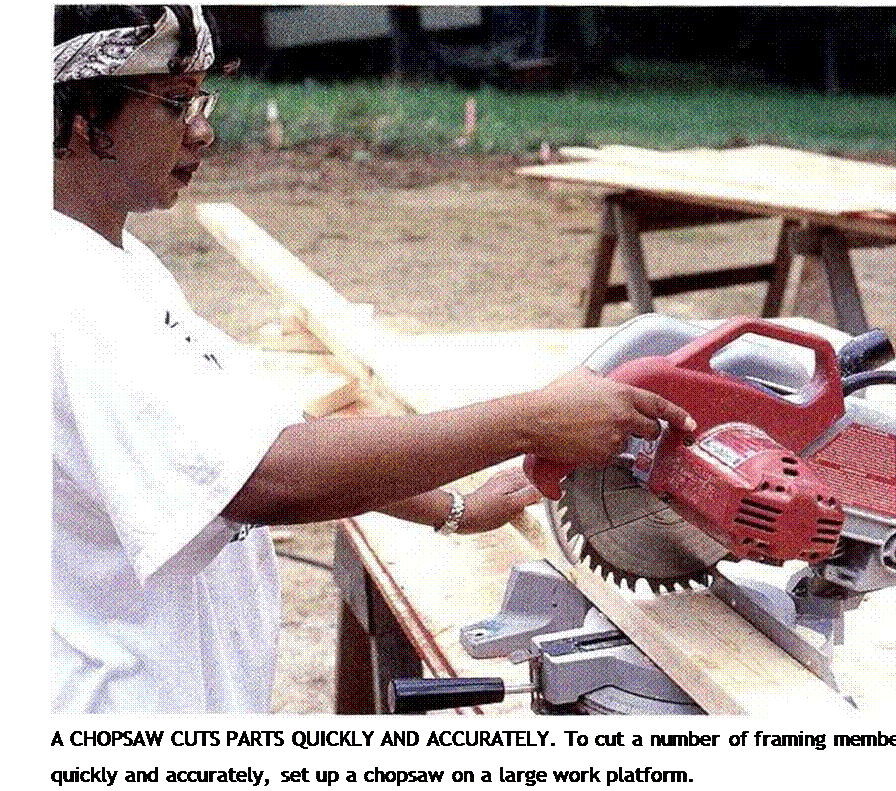Determine dimensions for stud length and header height
Stud length, header height, and other‘‘standard” dimensions vary somewhat from region to region. Find out what is standard in vour area. Out West, where Fm accustomed to framing, we use a stud that is 924 n. long.
I leaders for doors and windows are usually held 6 ft. 10 in. off the subfloor. Check the height in your region, though—in some places, the standard is 6 IT. 104 in. Headers for pockel doors and closet bifold doors may need to be higher to allow room for an overhead track.
Door and window sizes are noted on the plans with designations such as 3/0 x 6/8 (36 in. by 80 in.) or 5/0 x 4/0 (60 in. by 48 in.). Carpenters will say, “There’s a thrcc-oh by six-eight door…” or “We’ve got a five-oil by fbur-oh window going in this wall.” The first measurement is the width, the second is the height, and both are expressed in feet/inches. These dimensions are the actual door or window dimensions. To figure out your rough openings, you’ll have to add space for the jambs and trimmer studs. This is discussed in the following pages.
After you have a list of headers and all their
Л
dimensions for every opening in the house, you can cut and nail them together. Guide – lines for sizing and building headers are explained in the sidebar on p. 83. If a door header requires cripples, mark their length on the header, then place the header along the plate where the doorway will be. On window headers, mark the length of the top and bottom cripples, then place each header near the plate location where it will be installed (see the photo at left).

 |
Cut trimmers, rough sills, and cripples
Trimmers are cut and installed in pairs. The two trimmer studs set on the bottom plate support the ends of the header. Trimmers for 6/8 doors and windows are tvpicallv SO1/ in. long (81 in. in parts of the country where the header height is 6 ft. 10/ in.). Cut two trimmers for everv window less than 8 ft. wide. For
і
windows that are 8 ft. or wider, double up the trimmers on each side. Although you can cut door trimmers at this stage, I prefer to wait until the walls have been raised.
The width of a rough window opening tells you how long to make the rough sill.
Taking the trimmers into account, the rough still for a window is 3 in. shorter than the window header. Tack rough sills to the header with one 8d nail, and make sure that the. sizes of the window and cripples are marked on the header or sill. For windows that are 6 ft. or wider, you’ll need to double up on the rough sills and shorten the cripples by 1 / in.
Cut the cripples after you have cut all the headers, trimmers, and rough sills. Use a story pole, and make sure that your head is clear and your mind is focused. Making a mistake in the cripple length can result in window frames not fitting inside their openings, but
voumavnot know that until all the walls
і *
have been built and raised. 1 once cut all of a houses top cripples I in. too long. As a
result, 1 had to remove every door and window header and shorten all of the cripples. Not a good way to start the week.
Cut enough top and bottom cripples to nail one on each end of every header and rough sill and one every 15 in. or 24 in. o. c., depending on the stud spacing. A chopsaw set up on a good work platform is great for cutting cripples (see the photo above). A stop block, secured to the worktable or to an extension attached to the chopsaw, will enable you to cut identical cripples quickly and precisely.






Leave a reply